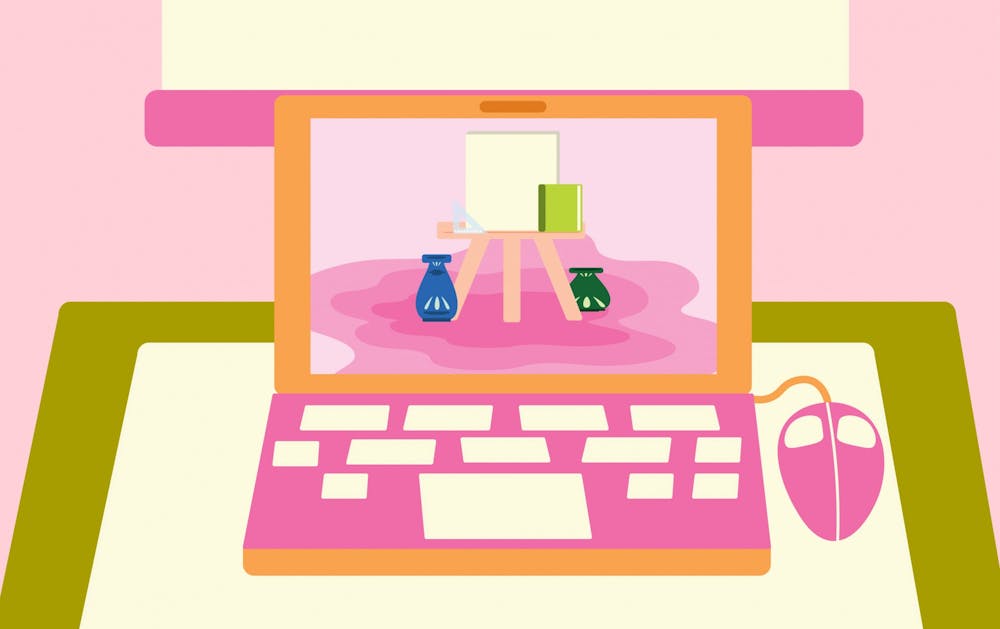Faculty and staff in ASU's Herberger Institute for Design and Arts are rethinking how to offer instruction to students in its many programs through various educational modalities and adjustments.
Herberger Institute Dean Steven Tepper said that the institute intends to follow University-wide precautions, such as mandatory face coverings, increased sanitation efforts and sustained physical distancing during lectures and labs to ensure safety for faculty and students.
"We are lowering density in all of our spaces to accommodate the social distancing requirements of the university and of the public health," Tepper said. "We are expecting everybody to clean their desks and stations and any equipment before they start class, or before they start working on something."
Classroom furniture will be moved to maintain six feet of distance between class attendees, "spots on the floor (will be marked) where people should queue," and Plexiglas shields will be placed in "high-traffic areas" to limit the spread of the virus, Tepper said.
One of the challenging areas for implementing protocols are the performing arts. Herberger is still determining concrete seating plans for "singing and brass and wind instruments" and exploring individual instruction in large rooms for the instructor and student to be 15-to-20 feet apart, Tepper said.
The Herberger Institute is aiming to break down large ensembles into smaller ones, implement Plexiglas barriers between performers and decrease audience sizes to promote physical distancing, Tepper said.
Dance productions and courses will be rethought for the fall as well, Tepper said, with an increased emphasis on solo and duet work so dancers aren't "dancing on top of each other."
Marc Neveu, the head of the architecture program at The Design School, believes his program will adjust easier than others, saying, "Studio works remarkably well in a remote or sync modality because … you can actually share drawings, you can share your model digitally, multiple people can view it at once (and) you can comment on it, you can draw on it."
For studio-based courses, Neveu plans to have groups of students alternate between remote and in-person learning every five weeks.
Many student projects can be developed in-studio and at-home simultaneously, Tepper said, and the enabling of Adobe programs on devices not directly affiliated with ASU should allow students more flexibility to complete digital design work remotely.
Students who live outside of Arizona will tentatively be able to participate in most fall courses remotely, with faculty adjusting assignments so out-of-state students can "learn the technique, learn the basic concepts, even if they have to work with materials at home, or delay the work until they can be here in-person," Tepper said.
Susan Beiner, a ceramics professor at the School of Art, said that many assignments have been restructured to be "not as active" so students are less likely to use multiple tools or rooms in one in-person session to reduce the spread of the virus.
To account for the loss of hands-on instruction, Beiner said video demonstrations of various techniques will be shown to students, both in-person and remotely, accompanied by verbal instruction.
Beiner expects students and faculty to "start out really strong" when it comes to practicing safety measures during class, but worries as the semester progresses, students may "tend to start to be a little too relaxed," and added faculty won't know "what happens to the students when they leave our very ordered studio."
Dennita Sewell, a professor and director at the School of Art's fashion program, said that faculty are creating a list of equipment for students to purchase if they do want to work outside of the classroom.
"We are talking almost everyday, especially amongst ourselves, about our specialized equipment and how we can make a quality experience going forward for students," Sewell said.
ASU art museums will open in the fall with restricted admissions to account for physical distancing, as will student galleries despite "not know(ing) how we're going to monitor the audiences for those, so it's unlikely that we're going to have the same kind of opening receptions that we've had in the past," Tepper said.
Professors recognize that the pandemic has forced themselves and students into unfamiliar territory when it comes to teaching and learning. However, they hope students adapt, like they are, and make the best of the circumstances.
"We're not going to get it all right this first time," Tepper said. "So I'm hoping that students will all, kind of, go into the fall saying, 'This is a grand experiment, we're all part of this massive disruption…' and to ultimately find the human connection between learners and teachers."
Reach the reporter at stellefs@asu.edu and follow @samtellefson on Twitter.
Like The State Press on Facebook and follow @statepress on Twitter.
Sam Ellefson is the Editor of State Press Magazine, leading a team of writers, editors and designers in creating four print issues each semester. Sam is a senior getting dual degrees in journalism and film studies and is pursuing an accelerated master's in mass communication at ASU.




